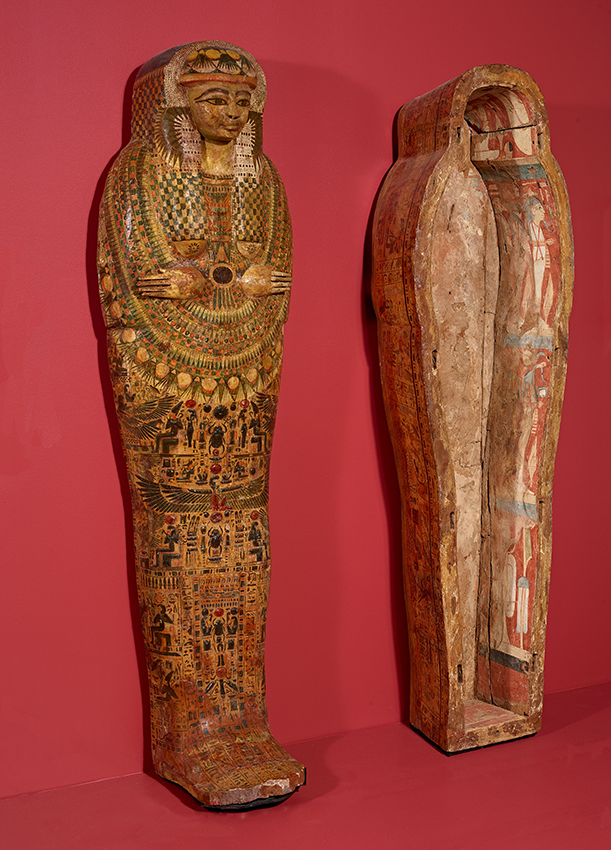Cantor Arts Center
328 Lomita Drive at Museum Way
Stanford, CA 94305-5060
Phone: 650-723-4177

Artist unknown (Egypt), Coffin for Female Mummy Identified as the Chantress of Amen (Amon), c. 1070 BCE–945 BCE. Wood with painted gesso relief. Gift of the Cooper Medical College, T.82.2.A-B
This coffin once belonged to a singer in the temple of Amen during the Twenty-First Dynasty of Egypt, but at a later date someone radically carved back the area around the face, chiseled out the lotus-bangs into a royal crown, and shortened the wings of the vulture’s headdress.
What we are likely seeing is a nineteenth-century vision of Cleopatra, as exemplified in Alexandre Cabanel’s 1887 painting Cleopatra Testing Poisons on Condemned Prisoners (see below). Cleopatra’s face is soft and round, her eyes are lined black, shadowy bangs cascade toward the eyes, a crown settles at the brow, and golden wings curve behind the chin, anticipating the chic bob hairstyle of many modern visions of Cleopatra. Just below, her chest is bare save for one lappet that falls over her left breast, and a striped fabric band (red, black, gold) dives down the torso until it reaches the belt. From waist to ankles, her dress is a kaleidoscope of color and Egyptian-esque symbols. It is perhaps telling that this coffin was taken from Egypt to Paris in in May of 1889 during the years when Cabanel’s Cleopatra was pleasing Parisian eyes with her decadence.
The Cantor’s coffin appears to be an “authentic hoax,” an object that blurs the boundaries between antiquity, modernity, authenticity, and forgery. We cannot accept “Cleopatra’s” beauty as ancient, but we also cannot dismiss this coffin as an outright fake. Already by 1852 the British traveler Bayle St. John observed that such objects were flooding antiquities markets, since “genuine, though somewhat dilapidated antiques” were no longer desired by many Western collectors.